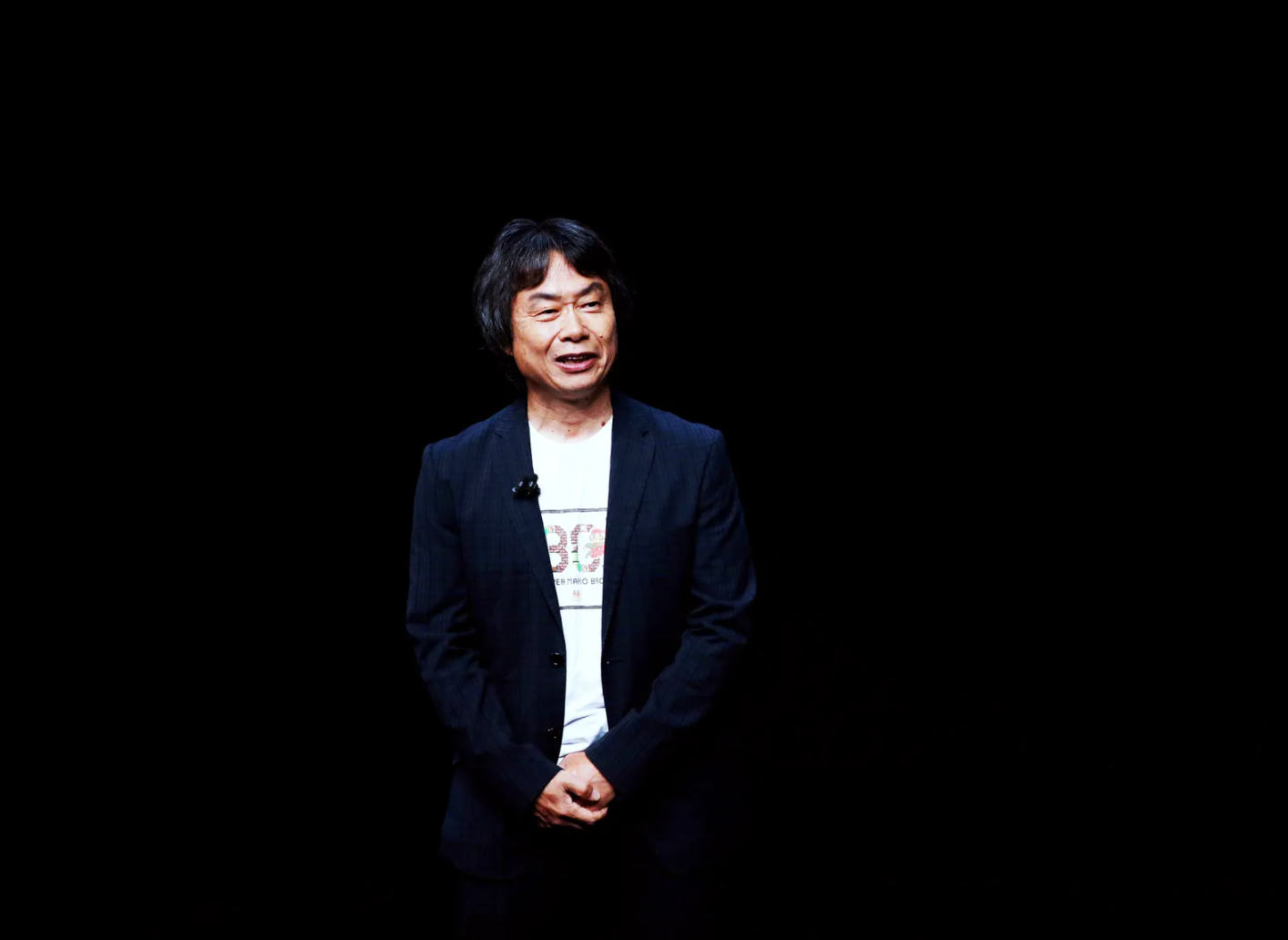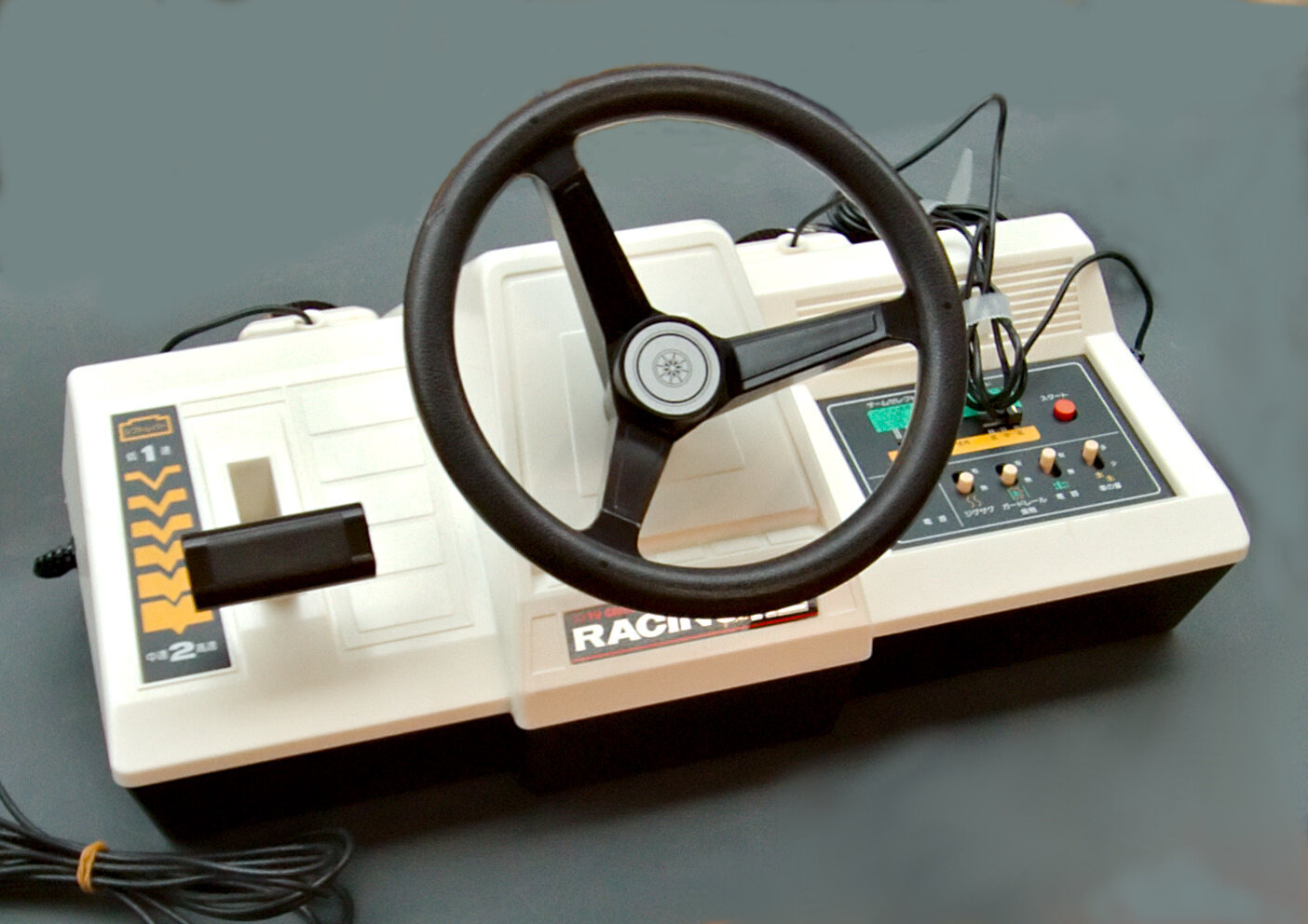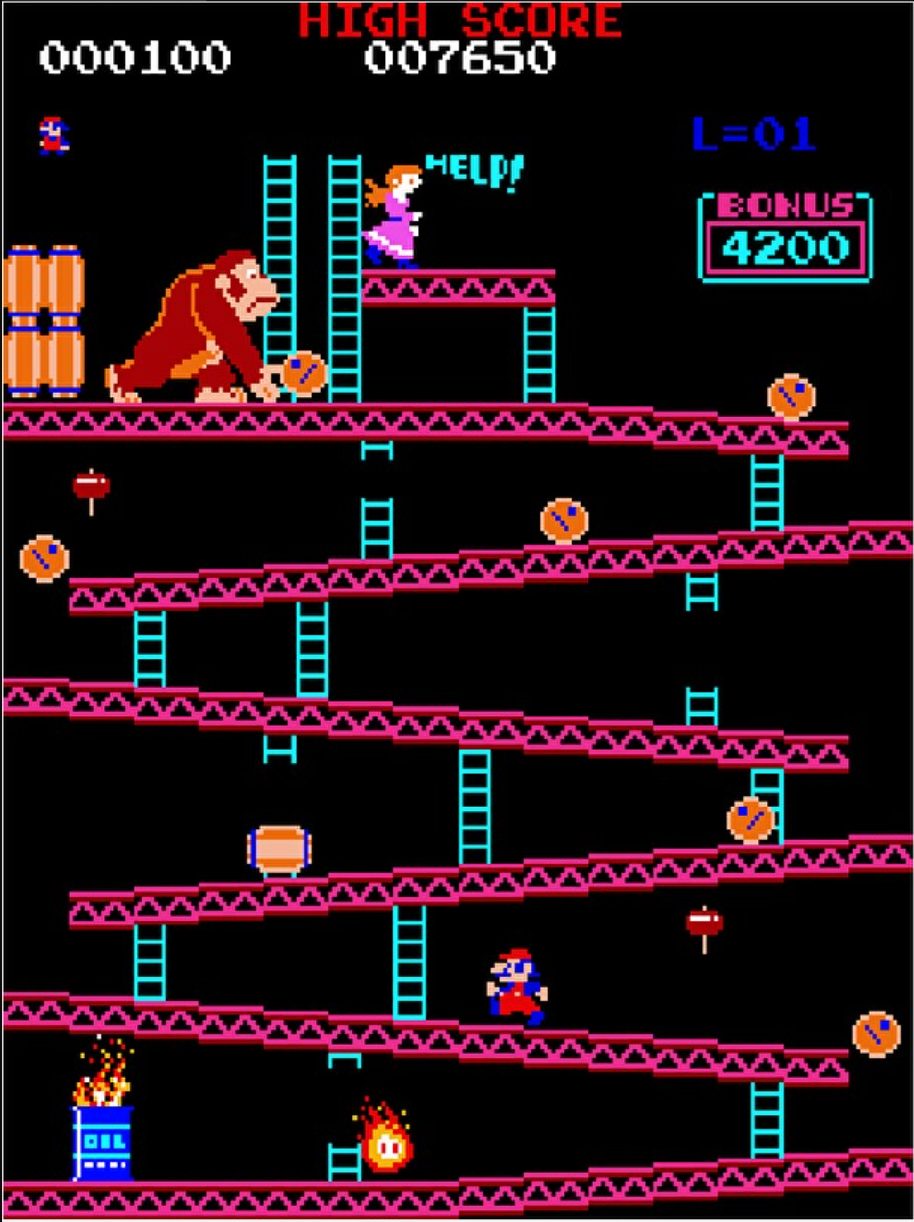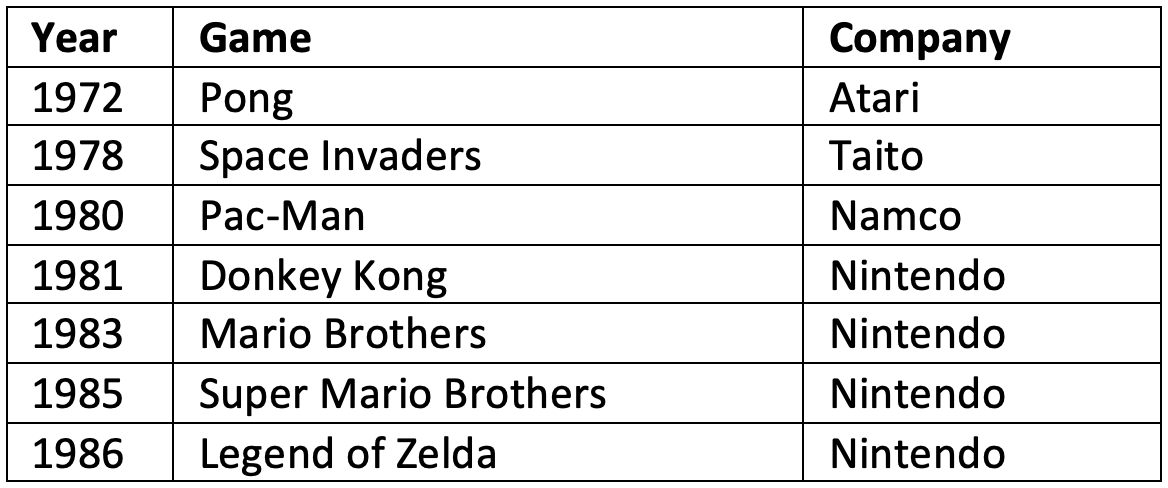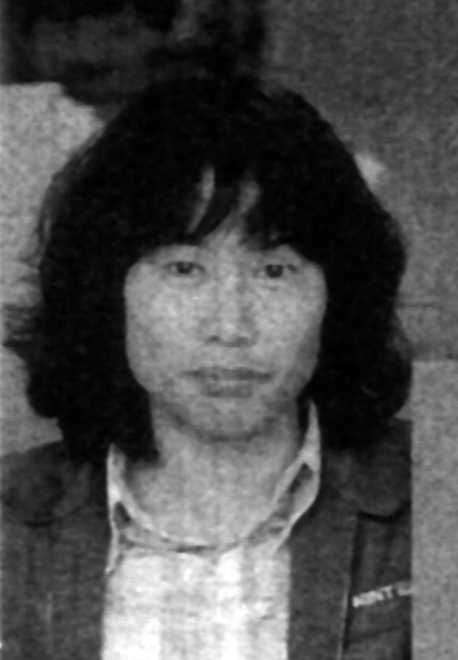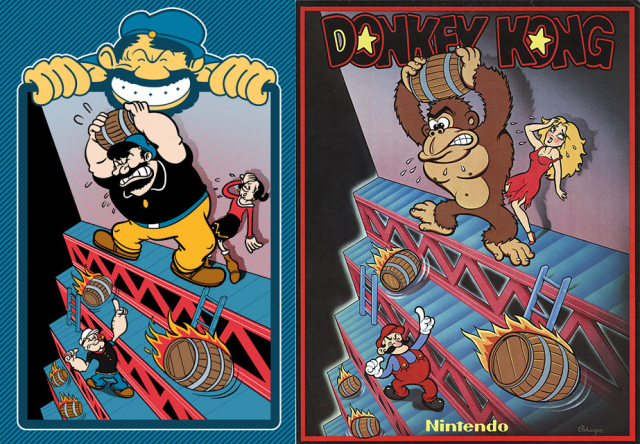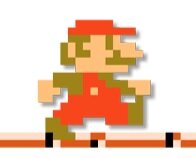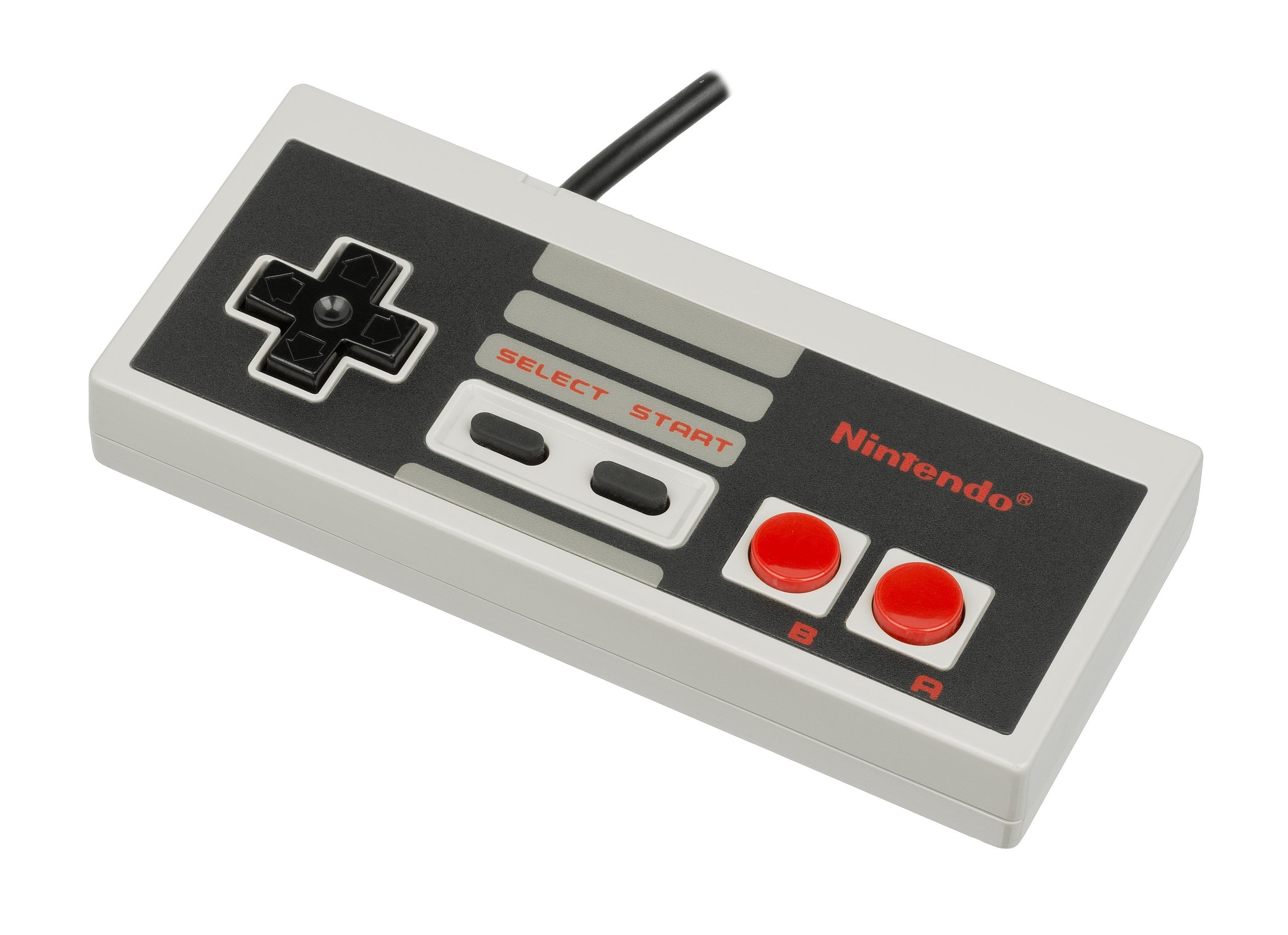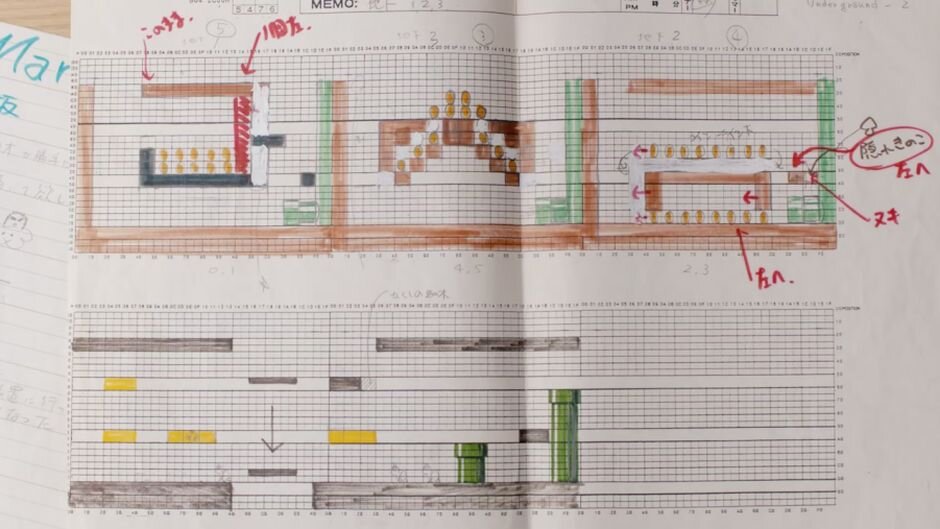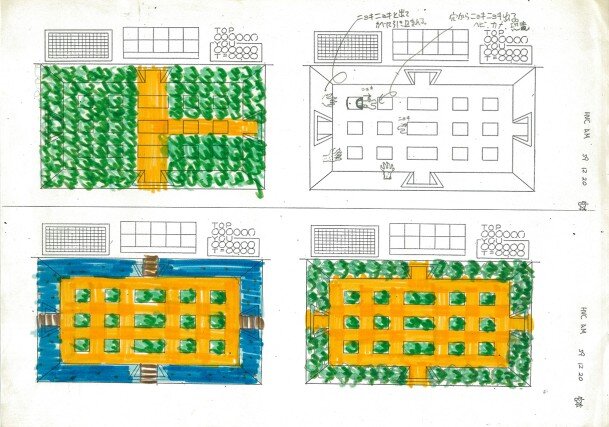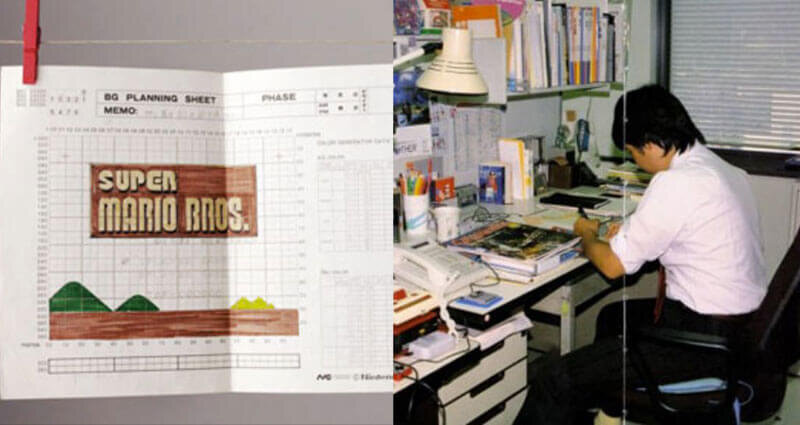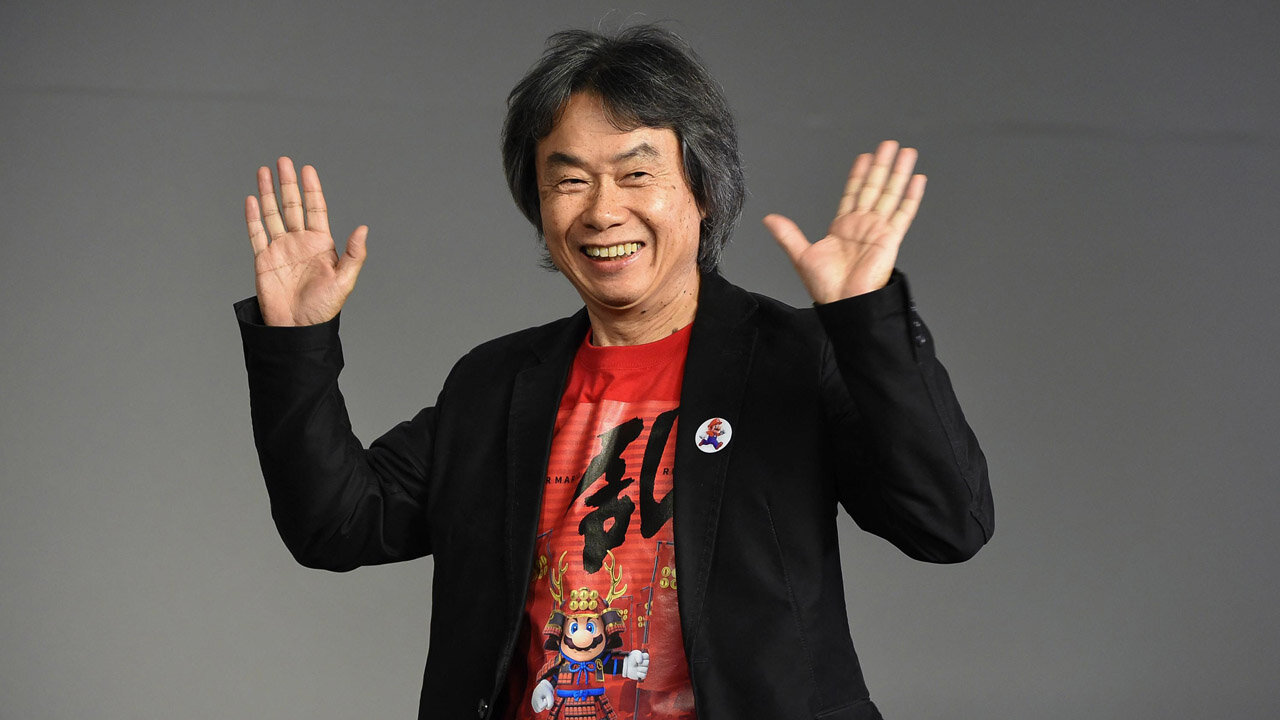Shigeru Miyamoto: Nintendo’s Super Power
Shigeru Miyamoto is considered the “father of modern video gaming” [1]. Out of his head came Donkey Kong, Super Mario Brothers, The Legend of Zelda, Wii Sports, Wii Fit, and others. Although there were many essential players in Nintendo’s deep 132-year history, it is highly unlikely that Nintendo would be the global gaming super power it is today without Shigeru Miyamoto.
Shigeru Miyamoto (2015)
The Back Story
Miyamoto was trained in industrial design at Kanazawa Municipal College of Industrial Arts in Japan. He aspired to be a comic artist (manga style), but with the help of his father he landed a job at Nintendo soon after earning his degree. At the time of his hire, in 1977, the Nintendo company was already 87 years old, had spent most of its history making playing cards, and had just released its first video game console called Color TV-Game [2]. Miyamoto’s first job at Nintendo was to design the housing for the Color TV Racing 112 (released in 1978).
Color TV Racing 112 — Miyamoto’s first project at Nintendo (1977-1978).
In 1979 he designed the graphics for arcade cabinets (Sheriff and Radarscope) [3, 4], and in 1981 Miyamoto designed his first video game – Donkey Kong.
Donkey Kong — Miyamoto’s first video game design (1981)
It’s difficult to overstate the importance of Donkey Kong in the history of video games; it introduced an entirely new gaming genre (platform game), saved Nintendo from bankruptcy, and put Miyamoto in a position to design other ground breaking games.
To put Donkey Kong (1981) into historical context, it is worth noting that although the first home video gaming console (Odyssey) was developed by Magnavox and released in 1972, new video games were primarily launched through video game arcades. When Miyamoto was hired at Nintendo in 1977 the company had not yet designed an arcade game, and Taito’s wildly popular Space Invaders arcade game had not yet been created (see table below).
Prominent Games of the Era
Nintendo had entered the video gaming industry as a supplier of light guns, which could be shot at television screens to virtually hit targets. Starting in 1972, Nintendo supplied Magnavox with light guns for the Odyssey home console [5].
It is important to know that it wasn’t until 1975 that Nintendo designed is own video game (EVR Race), not until 1977 that it developed its own console (Color TV Game 6), and not until 1978 that Nintendo produced its own arcade game (Computer Othello) [6]. This is what Nintendo looked like when they hired the young Miyamoto.
44 years later, Miyamoto still works for Nintendo; currently as Creative Fellow, previously as General Manager (1984-2015) and Senior Managing Director (2002-2015) [7]. Miyamoto’s breakthrough Donkey Kong game in 1981 and his ability to continuously build upon previous successes with Donkey Kong, Mario, Zelda and others has made Miyamoto the most respected game designer in the world [8].
To be like Miyamoto (6 things to try)
While Miyamoto’s path may be very different than the paths we have chosen to pursue, we can glean desirable characteristics worth emulating regardless of our interests. To be like Miyamoto, try these 6 things.
1. Get Outside of Your Comfort Zone
Two years after Miyamoto’s hire, in 1979, Nintendo gambled big on an arcade game called Radarscope, which Nintendo had tested in Japanese and Seattle arcades with good success. Miyamoto was a part of the development team, but his role was minimal as he may have only created the cabinet graphics. To expand beyond the Japanese market, Nintendo produced 3000 Radarscope arcade cabinets and shipped them to New York for distribution in the US. The result was near-immediate market failure; Nintendo only sold 1000 of the 3000 units.
Misjudging the market in this way nearly finished Nintendo. To recoup some of the loss, Nintendo president Hiroshi Yamauchi decided to retrofit the Radarscope arcade cabinets with a new game. He polled the company searching for ideas to replace Radarscope. Miyamoto’s Donkey Kong was selected [4]. Miyamoto later said that he didn’t join Nintendo to create video games but was inspired to get involved after seeing the popularity of Space Invaders.
The young Shigeru Miyamoto
It’s worth pausing to consider the weight of this moment in Miyamoto’s life, Nintendo’s history, and the future of video gaming. This moment reflects Miyamoto’s character more than any other. Keep in mind, he was not a video game designer, and neither he nor his company had experience in such work. He was young, and essentially an apprentice working on mechanical and graphical tasks. When Yamauchi polled the company on ideas for using the failed Radarscope cabinets, something in Miyamoto’s heart or head gave him confidence to try and to share his idea.
After his idea was selected for retrofit into Radarscope cabinets, Miyamoto dedicated himself to the effort needed to successfully launch a video game. This is the second great insight into his character – willingness and energy to work. He told his friends “You probably won’t hear from me for two or three months” since that was the typical game development time of the era. Ultimately it took Miyamoto and his team between 4 and 5 months to develop Donkey Kong [9].
As another demonstration of Miyamoto’s willingness to try hard things, take risks, and get outside of his comfort zone, he created the music for the opening and closing scenes for the arcade version of Donkey Kong [10].
Donkey Kong was an immediate market success in 1981 when it was released. By October 1981, Nintendo was selling 4000 Donkey Kong arcade cabinets per month [11]. It was promptly followed up by two sequels in Donkey Kong Jr (1982) and Donkey Kong 3 (1983), both led by Miyamoto [12, 13].
2. Be Different, Where it Matters
Donkey Kong was incredibly inventive for its time. Miyamoto’s approach was to innovate on game play and experience. The game is credited with three specific innovations:
First game where a character jumps
The creation of a new genre called platform games, which are games where characters jump or climb between solid platforms at different positions on the screen.
“First Use of Visual Storytelling in a Video Game" for cut scenes featured in the game [14]
Although the Donkey Kong and Mario characters continue to be some of the most recognizable of all time, Miyamoto was never interested in creating new characters but instead focused on creating new game play experiences. This is one reason why we continue to see Mario and others characters reappearing in many of Miyamoto’s games. In fact in his original vision for the Donkey Kong game, the protagonist was not Mario, but was the classic character Popeye trying to save Olive Oyl from Bluto [15].
Miyamoto’s original idea was for the protagonist to be the existing character Popeye.
The Popeye suggestion was not out of line with the pop culture of the day. Although Popeye was created in the 1930s, Paramount Pictures debuted the movie Popeye starring Robin Williams, just months before Donkey Kong was released [16]. Nintendo was committed enough to Miyamoto’s Popeye idea that it tried to secure a license to use the characters in the game. Nintendo failed to secure the rights, so Miyamoto converted the characters to Mario, Donkey Kong, and Pauline (yes that’s her name).
Miyamoto appears to have been the first video game designer to attempt to develop a game based on an existing pop culture character [17]. The innovative nature of that design choice may have led to Miyamoto’s idea being selected – but this isn’t documented. Failure to secure the Popeye license points to another essential characteristic of Miyamoto – his willingness to stick with it, even when things don’t go as planned. That characteristic plays out multiple times in Miyamoto’s future career, especially when faced with the disappointing market response to the Nintendo Game Cube and the Wii U.
3. Focus on User Experience
From the beginning of his career, Miyamoto was very user-centered (player-centered). There are various examples of this from Donkey Kong including Miyamoto’s desire to have the entire Donkey Kong story be understandable after seeing just a single screen at the arcade (climb the structure, save the prisoner from the enemy). This way potential players could intuitively know what needs to be done. Miyamoto frequently put his games in front of people without explaining anything to them. Then he just watched to see where they naturally struggle with the design. Being user-centered in this way has been a consistent part of his career.
Almost immediately after Donkey Kong’s success, Miyamoto began working on Mario Brothers (1983), which quickly led to Super Mario Brothers (1985). The Mario video game franchise (which includes all Mario video games) is the top selling franchise in the world at 760 million copies sold. To put this into perspective, the Minecraft franchise has sold 240 million copies [18].
Mario’s distinct features were designed to enhance player experience.
Mario’s shape, size, and movement are all great examples of Miyamoto’s approach to user centeredness, since they are designed for good user experience. Mario’s relatively large head a nose are sized to make it clear to the user which way Mario is pointed. Mario’s mustache and hat where part of the original design to make it so that facial expressions and hair movement would not need to be modeled unrealistically in the 8 bit format. Instead they could be hidden and left to the player’s imagination. Mario’s movement and control were also very important to Miyamoto, since he wanted each player to feel immersed in the game. Miyamoto did this by giving characters mass and inertia. Miyamoto conveys Mario’s mass by the small slide that occurs when Mario changes direction or lands from a jump.
Perhaps the greatest reflection of Miyamoto’s user-centered approach is the design of World 1-1 in Super Mario Brothers. The level is designed to teach users how to play the game. For example, throughout the game, Mario is typically positioned in the center of the screen, but not at the start of World 1-1. Here Mario is placed on the far left, and is facing the wide open space to the right. This is designed to teach users where Mario should go.
Opening scene of World 1-1 in Super Mario Brothers.
Upon moving Mario to the right, he meets an angry mushroom shaped enemy. If Mario runs into it, Mario dies and falls off the screen. Thus making it clear that Mario has multiple lives and how they are lost. The first over-head objects encountered in the game are flashing question boxes, which are designed to pique the new player’s curiosity. Bumping the question box from below releases another mushroom that moves in a direction that it is nearly impossible for Mario to avoid. When he touches it, he grows taller, thus teaching the player that while angry mushrooms will kill Mario, others enhance his abilities. World 1-1 is full of such teaching. As for the other worlds, Miyamoto was constantly trying to give players surprises and small wins, such as the hidden objects in walls and fireworks at the end of each world.
Another key example of Miyamoto’s focus on the user experience was his large interest in a player’s ability to naturally control character movement. This resulted in multiple new and patented game controllers. For example, Nintendo created the now ubiquitous cross d-pad [19], the controller trigger buttons, and the thumb joystick.
Cross D-Pad, originally on the Nintendo Famicom (1983) and later on the NES controller (shown here). Nintendo patented the innovation.
But the biggest innovation in controllers came with the Wii remote, as it created the first wireless controller that encouraged larger body movements. Of course the Wii remote changed the way games could be played. This was enabled by a thoughtful combination of infrared, Bluetooth, and MEMS technology. Changing the way games could be played was a major part of Miyamoto’s strategy for the Wii to be loved by mom [20].
“We’re really just concentrating on creating something that people want. I think that’s one of Nintendo’s strong points… (We’re) thinking of how a family spends their budgeted entertainment money. Rather than a dad going out and buying something that he wants, (we’re) creating something that we can present to them as something the whole family will use.” [21]
4. Use the Right Tools for the Job
As shown in the figures below, Miyamoto’s team laid out Super Mario Brother on graph paper before coding the game. This allowed them to focus on the game play, and not on the coding constraints. As shown in the annotations, this facilitated quick team-based iteration. The team used tracing paper over the landscape to explore various character movement through each level.
5. Allow Your Personal Experiences to Influence Your Work
Miyamoto’s other industry-changing game – The Legend of Zelda (1986) – was designed in parallel with and released just 5 months after Super Mario Brothers. Completely different than the side-scrolling genre popularized by the Super Mario Brothers, The Legend of Zelda is an open map action adventure game full of clues and puzzles.
Miyamoto is clear about his inspiration for the open map adventure game; as a child Miyamoto lived in Japan’s countryside where he spent most of his time exploring “forests with secluded lakes, caves, and rural villages” [22]. Miyamoto describes the Zelda games as an attempt to bring to life a “miniature garden” for players to explore.
The Legend of Zelda Concept Art.
A significant part of Miyamoto’s video game success can be traced back to his experience with Japanese comics (manga). Storytelling, scene presentation angle, and character reuse are all hallmarks of manga that were not noticeably present in the video game industry before Miyamoto.
Creating the music for Donkey Kong is also an example of Miyamoto bringing his previous experience to his design work. When asked about it, he said “I grew up watching a lot of cartoons and anime, so I just had this image that at the beginning there's always this dramatic music to start things off — that's where the dramatic intro came from. And then for the ending, I play guitar a little bit, and so the end song I put together as a bit of a parody of a song I used to play on guitar.” [10]
6. Collaborate with others
Though we have highlighted Miyamoto in this article, let’s not forget that he was not an engineer, nor a programmer, nor a marketer, nor an entrepreneur, but all of these and more were needed to realize his visions. It stands to reason that without collaboration, Miyamoto’s career would have taken a very different path.
There is ample evidence that both Miyamoto and Nintendo were good collaborators. Well before Miyamoto had joined the company, Nintendo had collaborated with Disney to produce and sell Disney-themed playing cards in the US. Recall that Nintendo entered the industry through collaborations with Magnavox. Miyamoto pursued the same philosophy by suggesting that the game to retrofit Radarscope cabinets with would feature Popeye.
Among all the collaborations, perhaps his collaboration with head engineer Gunpei Yokoi most influenced Miyamoto’s career and the rise of Nintendo. Yokoi presented Miyamoto’s Radarscope replacement ideas to Nintendo’s President, supervised the Donkey Kong project and co-developed Mario Brothers, and Super Mario Brothers with Miyamoto. Not only did Miyamoto rely on Yokoi’s technical expertise, he listed to Yokoi as a true collaborator; “[Yokoi] proposed the multiplayer concept and convinced [Miyamoto] to give Mario some superhuman abilities, such as the ability to jump unharmed from great heights.” [23]
Miyamoto at work.
Cut Scene: Ending
Whether your interests are in mechanical engineering, industrial design, computer coding, entrepreneurship, art, or video game design, it’s worth thinking about how Shigeru Miyamoto can influence your approach to design. This article extracted 6 things Miyamoto did that shaped his career and shaped video gaming history. Each are worth emulating. They are:
Get outside your comfort zone
Be different, where it matters
Focus on user experience
Use the right tools for the job
Allow your personal experiences to influence your work
Collaborate with others
Shortly after Super Mario Brothers achieved worldwide success, Miyamoto was told he had reached the “status of Walt Disney.” In response, Miyamoto expressed his belief that success is intrinsically tied to “whether or not it’s sought several decades after its creation…” and that he had “a lot to catch up on” [24]. The four decades since Mario’s introduction in Donkey Kong have been abundantly clear about Miyamoto’s incredible success and timeless legacy.
References:
[1] C. Sayre, “10 Questions for Shigeru Miyamoto,” Time, 2007, http://content.time.com/time/subscriber/article/0,33009,1645158,00.html, accessed 1 Dec 2021.
[2] “Color Game TV”, Wikipedia, https://en.wikipedia.org/wiki/Color_TV-Game, accessed 1 Dec 2021.
[3] “Sheriff (video game)”, Wikipedia, https://en.wikipedia.org/wiki/Sheriff_(video_game), accessed 1 Dec 2021.
[4] “Radar Scope”, Wikipedia, https://en.wikipedia.org/wiki/Radar_Scope, accessed 1 Dec 2021.
[5] Rolenta, “The Nintendo Odyssey,” The Game Scholar, 2018, https://thegamescholar.com/2020/04/28/the-nintendo-odyssey/, accessed 1 Dec 2021.
[6] D. Cohen, “The History of Nintendo Video Games,” https://www.lifewire.com/history-of-nintendo-729734, accessed 1 Dec 2021.
[7] “Shigeru Miyamoto”, Wikipedia, https://en.wikipedia.org/wiki/Shigeru_Miyamoto, accessed 1 Dec 2021.
[8] E. Hosie, “A Guide to the Top 10 Game Designers,” The List, 2014, https://www.list.co.uk/article/66236-a-guide-to-the-top-ten-game-designers/, accessed 1 Dec 2021.
[9] C. Kohler, “Miyamoto Spills *Donkey Kong’*s Darkest Secrets 35 Years Later,” Wired, 2016, https://www.wired.com/2016/10/miyamoto-donkey-kong-secrets/, accessed 1 Dec 2021.
[10] NPR Staff, “Q&A: Shigeru Miyamoto on the Origins of Nintendo’s Famous Characters,” NPR, 2015, https://www.npr.org/sections/alltechconsidered/2015/06/19/415568892/q-a-shigeru-miyamoto-on-the-origins-of-nintendos-famous-characters, accessed 1 Dec 2021.
[11] C. Irwin, “40 Years Ago: ‘Donkey Kong’ Saves Nintendo from Failure,” Classic Rock & Culture, 2021, https://ultimateclassicrock.com/donkey-kong-1981-game/, accessed 1 Dec 2021.
[12] “Donkey Kong Jr.”, Wikipedia, https://en.wikipedia.org/wiki/Donkey_Kong_Jr., accessed 1 Dec 2021.
[13] “Donkey Kong 3”, Wikipedia, https://en.wikipedia.org/wiki/Donkey_Kong_3, accessed 1 Dec 2021.
[14] Guinness World Records, First Use of Visual Storytelling in a Videogame, Guinness World Records, 1981, https://www.guinnessworldrecords.com/world-records/first-use-of-visual-storytelling-in-a-video-game, accessed 1 Dec 2021.
[15] “Donkey Kong (video game)”, Wikipedia, https://en.wikipedia.org/wiki/Donkey_Kong_(video_game), accessed 1 Dec 2021.
[16] IMDB, Popeye, IMDB, 1980 https://m.imdb.com/title/tt0081353/?ref_=m_ttmi_tt, accessed 1 Dec 2021.
[17] “Category: Video game characters by year of introduction,” Wikipedia, https://en.wikipedia.org/wiki/Category:Video_game_characters_by_year_of_introduction, accessed 1 Dec 2021.
[18] “List of Best-Selling Video Game Franchises,” Wikipedia, https://en.wikipedia.org/wiki/List_of_best-selling_video_game_franchises, accessed 1 Dec 2021.
[19] “D-pad,” Wikipedia, https://en.wikipedia.org/wiki/D-pad, accessed 1 Dec 2021.
[20] C. Kirk, “How Nintendo saved itself from irrelevance and turned everyone into a gamer,” Slate, 2012, https://slate.com/business/2012/10/nintendo-wii-the-console-that-beat-the-xbox-and-playstation-and-saved-nintendo.html, accessed 1 Dec 2021.
[21] T. Wolverton, “The Mercury News interview: Shigeru Miyamoto, head of game development, Nintendo,” The Mercury News, 2009, https://www.mercurynews.com/2009/07/31/the-mercury-news-interview-shigeru-miyamoto-head-of-game-development-nintendo/, accessed 1 Dec 2021.
[22] “The Legend of Zelda,” Wikipedia, https://en.wikipedia.org/wiki/The_Legend_of_Zelda, accessed 1 Dec 2021.
[23] “Gunpei Yokoi,” Wikipedia, https://en.wikipedia.org/wiki/Gunpei_Yokoi, accessed 1 Dec 2021.
[24] A. Bankhurst, ‘Shigeru Miyamoto Talks His Career at Nintendo and How He Wants to 'Create a Kinder World',’ IGN, 2020, https://www.ign.com/articles/shigeru-miyamoto-talks-his-career-at-nintendo-and-how-he-wants-to-create-a-kinder-world, accessed 1 Dec 2021.
To cite this article:
Mattson, Chris. “Shigeru Miyamoto: Nintendo’s Super Power.” The BYU Design Review, 1 Dec. 2021, https://www.designreview.byu.edu/collections/shigeru-miyamoto-nintendos-super-power.


